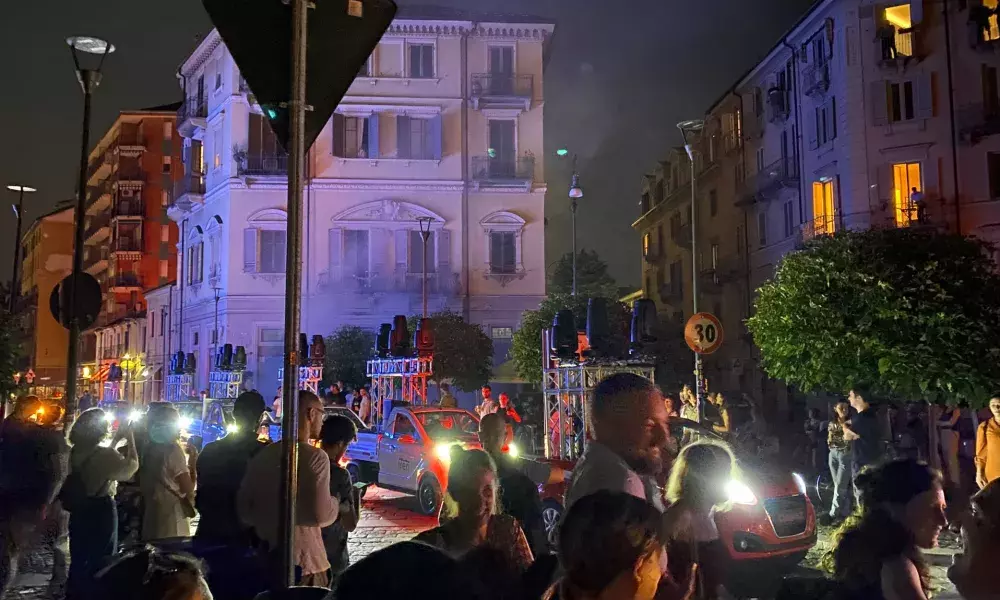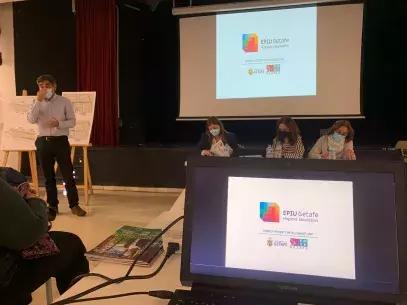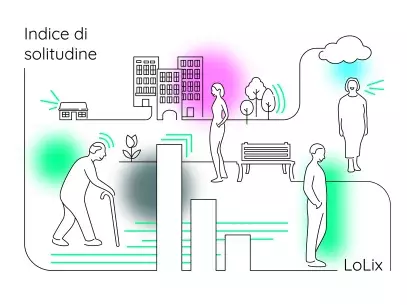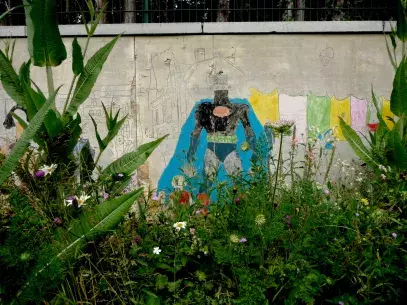
The call for applications promoted by the Municipality of Turin sought proposals to improve liveability and the perception of security in the evening and at night in the areas adjacent to the Dora River. This call is significant for many reasons.
Firstly, it is one of the most economically significant measures of the project financed under the Urban Innovative Actions (UIA) program. One million euros was allocated, an amount equal to 17% of the total budget of ToNite and 22% of the EU contribution. The second reason relates to the objective of the call: "to favour the creation of a widespread proximity infrastructure able to generate a positive impact on the territory through the participation of local communities, the enhancement of the potential of the territory and the shared care of public spaces, with the ultimate goal of improving the perception of safety and liveability of public spaces "(art. 1 Tender). In short, the call aims to promote the leading role of local actors to foster positive and lasting social impacts through the participation of local communities. Thirdly, the call has provided significant actions to accompany the project ideas, both in the pre-application and implementation phases, as well as the provision of an App and a technological platform to promote offered services and stimulate the involvement of local communities.
For these reasons, but also for the concrete contribution of this measure to the Urban authority action of urban regeneration in a critical and complex area of the city, it is interesting to propose a first reflection on the main outcomes of the call. In a later web article, we will focus on project results.
Specifically, the call for applications divides the Tonite territory into two areas (Aurora and Vanchiglia) to highlight the territorial specificities better.
The call addresses liveability and the perception of security in the evening and at night. In particular, projects with a territorial approach to manage urban criticalities were welcome. Projects could include different interventions such as: the recovery and reuse of spaces; the improved usability of public spaces via forms of participatory care; the improvement of cultural and economic offerings near the Dora River area at night; diversified commercial offerings to mitigate the negative effects of a distorting or exclusive use of public space and the promotion of a sustainable nightlife. In addition, interventions on intergenerational dialogue, street education, nocturnal social and health centres were envisaged.
A further specificity of the call was the choice to extend participation to for-profit organisations, intending to directly involve local economic actors in the regeneration of a very significant area.
The features of the call for application reflect what the Tonite project wants to achieve and the relevant impact area and indicators.
Unfortunately, some applicants failed to show they understood the need for intervention strategies, and they extended the "traditionally daytime" activities and initiatives with positive effects to the evening. Such an extension requires one to properly monitor and evaluate the activities to understand whether an impact on the night-time was achieved and sustainable over time. Nevertheless, many selected proposals presented interesting ideas regarding complementarity and integration with the actions of the urban authority.
One of the specific elements of the call was the opportunity to receive technical assistance for the project design. Although the call provided for the technical assistance only in a collective form, namely with meetings between potential candidates to present proposals (see art.5.2 tender), in practice, the support also took place through a one-to-one approach with confidential interviews between technical assistants and the organisations requesting the service.
The outcomes of this supporting action were quite significant. 107 people from 93 organisations took part in the three arranged collective meetings, and 36 of these organisations presented an application (38%). Among the submissions of proposals for Area 1, the percentage of organisations taking part in the accompanying activity was 47%, while for Area 2, it was 39%. 68% of the winning organisations participated to the supporting action. The individual meetings were also significant, although less significant in terms of participants (9). However, 8 out of 9 applied, and half were eligible for funding.
Eighty applications were evaluated, 57 for Area 1 and 23 for Area 2. Most of these achieved the minimum score required by the call (60/100), and only three were excluded. The typology of the leading subjects is also interesting. Although the call also envisaged the participation of for-profit organisations, most applications came from the non-profit sector. Sixty-three non-profit organisations and one benefit corporation applied (80%); five universities, cultural and educational institutions (6%); two religious’ institutions (3%); nine for-profit companies (11%). At the end of the evaluation process, 19 proposals were selected (14 for Area 1 and 5 for Area 2). The legal nature of the successful applicants is distributed as follows: 15 non-profit organisations (79%); three universities, cultural and educational institutions (16%) and one religious institution (5%). No proposal submitted by a for-profit company received a score such as to be eligible for funding.
The 19 selected applications shared some interesting elements, which were positively evaluated by the selection board.
First of all, most of the funded proposals were submitted by applicants already working in the areas. The other funded ones came from applicants that want to use their technical skills and field experience for these territories, even without a long-standing connection with the areas.
It is probably also in relation to these characteristics of the submitted applications that the evaluation board gave a positive evaluation of the expected social impact, with an average score of 21.4/25 (19.4 min. and 23.2 max). The evaluation board also rated the future sustainability of the projects quite positively. With a maximum score of 7 points, the approved projects received an average of 5.1, ranging from 3.4 to 5.8.
Reading the proposed actions, it is clear the will to propose a mix of activities, often associating interventions on the built environment with intangible assets. Currently, it is not possible to assess how much this intervention strategy refers to an integrated approach to urban regeneration. There is no doubt that while the whole framework is quite varied, some thematic areas received particular attention. In detail: nine projects envisage transformative or upgrading actions of public space or unused spaces; ten proposals focus on the cultural dimension and the promotion of sociality or sporting practice; eight propose actions in the field of education; five implement social and health activities; two projects explicitly address the support of the commercial fabric of proximity, with particular attention to the ethnic dimension and the night.
Analysing the approved projects, a more critical point is the relationship between the proposed activities and the theme of improving liveability in the evening, which was one of the priority objectives of the call. Only seven proposals present actions specifically designed for the evening/night, while another eight propose the extension of activities carried out during the day. Four proposals do not indicate the relationship between the proposed activities and the goal of improving the usability of the area during the evening and at night.
The last significant aspect is related to the opportunity given by the call to use the Tellingstones App as a tool to tell and promote the activated services and foster the involvement and animation of the local community (art. 5.3 tender). In this regard, only two applications indicate the tool offered as the main tool for the promotion and exchange (even transforming it into an opportunity for participatory content planning), while another eight proposals generally include it among the social media used in the project. Nine projects never mentioned it as a possible option.
Taking for granted that this app is a core element of the development of the Tonite project, in that case, it will be necessary to carry out a specific promotional action during the implementation of the projects.
The analysis of the applications allows us to highlight four important issues.
The lack of participation of the local commercial fabric
Although the call has received many applications, it undoubtedly failed to meet promoters' expectations. In particular, the non-participation of for-profit enterprises and, above all, of those weaved into the local commercial fabric, entails a significant constraint, both in relation to the aims of the call and to the more general objectives of ToNite. In fact, upon analysis of the few for-profit companies that have applied, almost all of them operate in the field of consultancy and services and that no commercial trade enterprise (ongoing or intending to set up) has participated in the tender, not even through their representative organisations. Obviously, there are no data that show whether there was a communication problem, or whether the call for applications was unsuitable for these types of subjects. The covid-19 pandemic could also be one factor that has discouraged commercial players from participating. However, due to the importance that these actors may have in the ToNite regeneration process, it would be desirable to find new ways to involve them in future.
The effects of the pre-application accompanying action
It has already been mentioned about the effects of the pre-application accompanying action and how this practice can be interesting as concrete experimentation of the technical assistance function offered in the framework of the public tender procedures. However, the one-to-one accompanying actions need to be considered more carefully. It does not raise any issue in terms of transparency and fairness in the case of a call for contributions, but it would raise some concerns in the case of a public tender procedure for the purchase of goods or services or with co-design procedures. Considering that one of the UIA programme objectives includes the experimentation of practices to innovate the management of public procurement, further reflection on this aspect would be needed, even in a future web article.
The issues of safety and urban liveability
The ToNite project strongly focuses on the theme of urban safety and liveability, but almost all the proposals seem to approach these issues in an excessively deterministic way following a cause/effect relationship. Relevant literature on urban security affirms that informal social control of public space can directly affect the citizens' perception of safety. However, the interventions in public space should be carefully designed, governed, monitored and evaluated, especially in terms of their mid-term impact.
The management of the projects’ impacts and the intervention strategy of the Public Administration
A further element of reflection concerns the governance of the projects’ impacts and their relationship with the strategy of the City of Turin.
The first element refers to the complementarity of the interventions on public space envisaged by the financed projects with those of ordinary and extraordinary maintenance of the City. The theme is quite important given that neither the call nor the projects offer specific elements to understand possible synergies, integrations, effects in the medium term of such measures that should be part of an integrated action directed by the public administration.
The second element concerns those projects which - unlike others which state community empowerment actions as an objective - are explicitly articulated as a social or educational service in response to an identified need. If these types of projects would be able to effectively respond to a need, how will they be accompanied to evolve from a small project, towards a more systematic and ordinary response to the daily needs of the territory?
The last question concerns the monitoring and evaluating of the impact, seen as a whole system, of the winning projects. Each project has proposed its own monitoring and evaluation model which therefore makes it difficult to integrate them in a clear urban regeneration process governed by the City through forms of multilevel governance. On this point, the accompanying action to the projects is no help because it mainly aims to enhance the capacity building of the applicants. While the monitoring and evaluation framework of Tonite will be an asset to reach this objective, the city should attempt to integrate the winning project within a common strategy of not only the Tonite project but also of a municipal strategy. Unfortunately, the monitoring and evaluation measures of each project seem to not include this opportunity.
About this resource
The Urban Innovative Actions (UIA) is a European Union initiative that provided funding to urban areas across Europe to test new and unproven solutions to urban challenges. The initiative had a total ERDF budget of €372 million for 2014-2020.
Similar content




